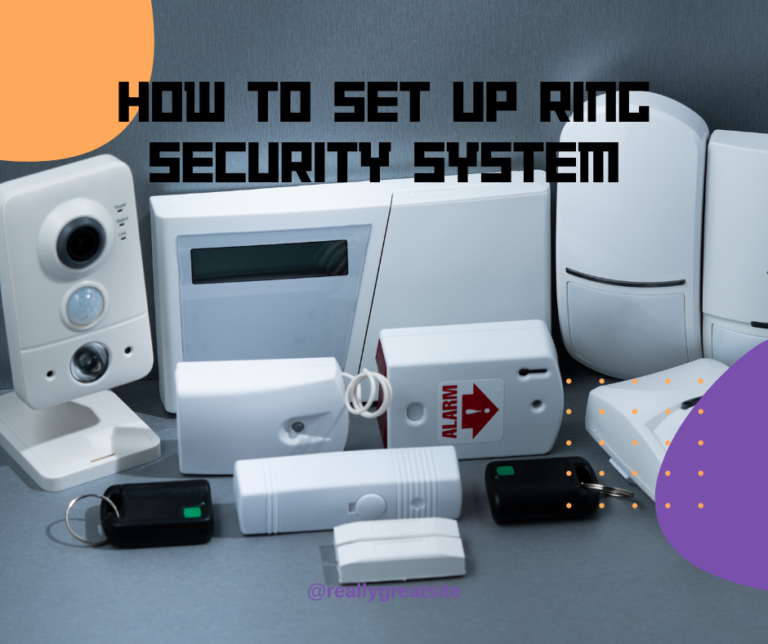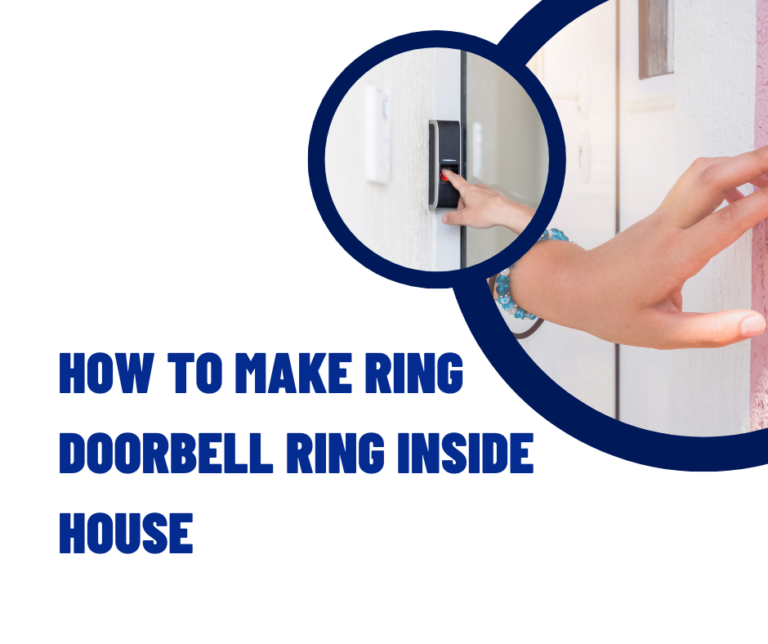Ring Doorbell Power Requirements

Did you know that the power requirements for your Ring doorbell play a significant role in its performance? Understanding these specifics is vital for ensuring seamless functionality. Whether you have a battery-powered or wired model, each comes with unique power needs that can impact how well your doorbell operates.
By exploring the nuances of these power requirements, you’ll be equipped with the knowledge to optimize your Ring doorbell’s performance. Stay tuned to uncover the key to powering your Ring doorbell effectively and never miss an important visitor alert again.
Key Takeaways
- Battery-powered Ring doorbells use non-rechargeable Lithium AA batteries with varying longevity.
- Wired Ring doorbells rely on existing wiring, requiring proper transformer installation.
- Understanding voltage, power needs, and battery management is crucial for optimal performance.
- Check transformer compatibility, steady power output, and voltage regulation for successful installation and operation.
Battery-Powered Ring Doorbells
Battery-powered Ring doorbells operate using readily available, non-rechargeable Lithium AA batteries with a typical voltage of 1.5V each. The battery longevity of these doorbells varies based on usage factors like doorbell presses, motion detections, live view usage, Wi-Fi signal strength, and ambient temperature.
Installation of battery-powered Ring doorbells is straightforward, requiring only the insertion of the specified number of batteries into the designated compartment, typically ranging from 2 to 4 batteries depending on the model. These doorbells are designed with weather resistance features to withstand various outdoor conditions, ensuring reliability and durability.
Security features such as motion detection, two-way audio, and video recording enhance the safety of your home. Additionally, customization options allow users to adjust settings like motion sensitivity, notification preferences, and privacy zones according to their needs.
Battery-powered Ring doorbells offer a convenient and versatile home security solution with easy installation, robust weather resistance, advanced security features, and customizable settings.
Voltage Requirements for Batteries
When considering the voltage requirements for batteries in Ring doorbells, it is essential to understand the specific power needs of each model for optimal performance. The voltage variations in battery-powered Ring doorbells play a crucial role in determining battery longevity, power consumption, and overall energy efficiency. Ensuring the correct voltage supply is crucial for the doorbell’s proper functioning and extended battery life. Here is a table outlining some key considerations regarding the voltage requirements for batteries in Ring doorbells:
| Aspect | Description |
|---|---|
| Voltage | Typically 1.5V per non-rechargeable Lithium AA battery. |
| Power Consumption | Varied based on model and usage patterns like doorbell presses, motion detections, etc. |
| Charging Options | Limited to replacing batteries in battery-powered models. |
Understanding these voltage requirements is vital for maintaining the optimal performance of your Ring doorbell and maximizing its battery life.
Number of Batteries Needed
The number of batteries required for Ring doorbells varies depending on the specific model, ranging typically from 2 to 4 batteries. When considering battery usage for your Ring doorbell, it’s essential to prioritize battery replacement, longevity, performance, optimization, and maintenance.
- Battery Replacement: Regularly check and replace batteries based on the manufacturer’s recommendations to ensure continuous operation.
- Battery Longevity: Maximizing battery life involves optimizing settings, such as motion detection sensitivity and video recording duration.
- Battery Performance: Monitor battery performance through the Ring app to detect any issues promptly.
- Battery Optimization: Adjusting settings like motion zones and alerts can help optimize battery usage.
- Battery Maintenance: Keep the battery compartment clean and free of debris to prevent any interference with proper battery function.
Factors Affecting Battery Life
To optimize the longevity of your Ring doorbell’s battery, understanding the factors that affect its life span is crucial. Several key elements can impact the battery life of your device. Here are some essential factors to consider:
| Factors affecting battery life | Description | Impact |
|---|---|---|
| Battery health | The overall condition of the battery, including capacity and age. | Deterioration over time affects performance. |
| Temperature effects | Extreme temperatures can shorten battery life significantly. | Avoid exposing the device to harsh conditions. |
| Usage patterns | Frequency of doorbell presses, motion detection, and live view usage. | Heavy usage drains the battery faster. |
| Signal interference | Poor Wi-Fi signal strength can increase battery consumption. | Ensure a strong and stable Wi-Fi connection. |
| Power saving features | Activating power-saving modes can extend battery life. | Utilize available energy-saving settings. |
Wired Ring Doorbells
For wired Ring doorbells, the power source is typically the existing doorbell wiring, which delivers 16-24 Volts AC (VAC) with a frequency of 50/60Hz.
-
Transformer Installation: Ensure the transformer in your existing infrastructure is compatible. If not, you may need to install a transformer that meets the voltage and frequency requirements.
-
Wiring Setup: Properly connect the doorbell to the existing wiring following manufacturer guidelines to ensure a stable power supply.
-
Power Consumption: Understand the power requirements of your specific Ring doorbell model to ensure it operates optimally without overloading the system.
-
Existing Infrastructure: Check the condition of your current wiring to ensure it can support the power needs of the Ring doorbell and make any necessary upgrades.
-
Electrical Compatibility: Verify that the electrical specifications of your doorbell wiring match the requirements of the Ring device to avoid damaging the unit or your home’s electrical system.
Power Source for Wired Models
If your existing doorbell wiring meets the specifications of 16-24 Volts AC (VAC) with a frequency of 50/60Hz, you’re ready to power your wired Ring doorbell without the need for batteries. Ensure the electrical compatibility of your power source before installation to avoid potential issues.
The power consumption of your Ring doorbell will be regulated by the voltage supplied through the wiring. During the wiring installation process, make sure to follow the manufacturer’s guidelines carefully to ensure a proper connection.
If you encounter any power supply troubleshooting, such as the doorbell not functioning correctly, check the voltage regulation and the wiring connections. Proper voltage regulation is crucial for the optimal performance of your wired Ring doorbell.
Transformer Compatibility
Ensure your existing doorbell wiring meets the specified voltage and frequency requirements for seamless compatibility with your Ring doorbell transformer. When dealing with transformer compatibility, you must consider various aspects to ensure a successful installation process and operation.
Here are some key points to keep in mind:
- Compatibility issues: Check if your current transformer’s power supply aligns with the Ring doorbell requirements to avoid any operational issues.
- Installation process: Follow the manufacturer’s guidelines for installing the compatible transformer correctly to ensure a stable power supply to your Ring doorbell.
- Power supply: The transformer should provide a steady power output within the specified voltage range to prevent any damage to your device.
- Voltage regulation: Ensure that the transformer maintains a consistent voltage output to prevent fluctuations that could affect your Ring doorbell’s performance.
- Troubleshooting tips: If you encounter power-related problems, consider checking the transformer first to rule out any issues with the power supply.
Voltage and Amperage Requirements
When selecting a Ring doorbell model, consider the specific voltage and amperage requirements to ensure proper functionality and compatibility. Power consumption analysis is vital to determine the voltage stability and amperage capacity needed for your Ring doorbell. Different models may have varying energy efficiency, so an energy efficiency comparison can help you choose the most suitable one. Understanding the power requirements of your Ring doorbell allows for performance optimization techniques to be implemented effectively.
For wired Ring doorbells, the power source is crucial. They typically require 16-24 Volts AC (VAC) with a frequency of 50/60Hz. Transformer compatibility is essential; if your existing wiring doesn’t meet these specifications, you may need to install a compatible transformer. Most wired Ring doorbells need a transformer output of 16-24 VAC, 50/60Hz, and 8VA to 40VA. Models like the Ring Video Doorbell Pro and Ring Video Doorbell Pro 2 may require a slightly higher minimum VA, usually around 10VA. Ensure you check the product specifications or user manual for precise voltage and amperage requirements.
General Guideline for Transformer Output
For optimal performance of your Ring doorbell, the recommended transformer output typically falls within the range of 16-24 VAC and 8VA to 40VA. When considering transformer sizing for your wired Ring doorbell, keep the following guidelines in mind:
-
Proper Installation Tips:
-
Ensure the transformer is compatible with your Ring doorbell model.
-
Hire a professional electrician if you’re unsure about the installation process.
-
Efficient Power Consumption:
-
Use a transformer with the appropriate VA rating to meet your doorbell’s power needs.
-
Higher VA transformers can support additional Ring accessories if needed.
-
Troubleshooting Advice:
-
If your Ring doorbell isn’t functioning correctly, check the transformer output with a multimeter.
-
Ensure the transformer is providing a consistent voltage within the recommended range.
-
Enhancing Energy Efficiency:
-
Opt for energy-efficient transformers to reduce power wastage.
-
Consider smart transformers that offer features like power scheduling for added efficiency.
Following these transformer guidelines can ensure your Ring doorbell operates reliably and efficiently.
Specific Requirements for Ring Pro Models
To guarantee optimal performance for Ring Pro models, adhere to the specific voltage and amperage requirements outlined in the product specifications or user manual for your particular device. When considering Ring Pro installation, wiring considerations are crucial to ensure proper functionality. Here’s a breakdown of power supply options, advanced features, and troubleshooting tips for Ring Pro models:
| Power Supply Options | Voltage (VAC) | Amperage (VA) |
|---|---|---|
| Existing Doorbell Wiring | 16-24 | 8-40 |
| Compatible Transformer Installation | 16-24 | 10 (minimum) |
| Backup Battery Systems | N/A | N/A |
For Ring Pro installation, verify that your existing wiring meets the voltage and amperage requirements. If not, consider installing a compatible transformer to power your Ring Pro effectively. The advanced features of Ring Pro models, such as customizable motion zones and enhanced video quality, rely on a stable power supply. In case of issues, troubleshoot by checking the transformer compatibility, ensuring proper wiring connections, and monitoring the power output. By adhering to these specifications and guidelines, you can optimize the performance of your Ring Pro doorbell.





